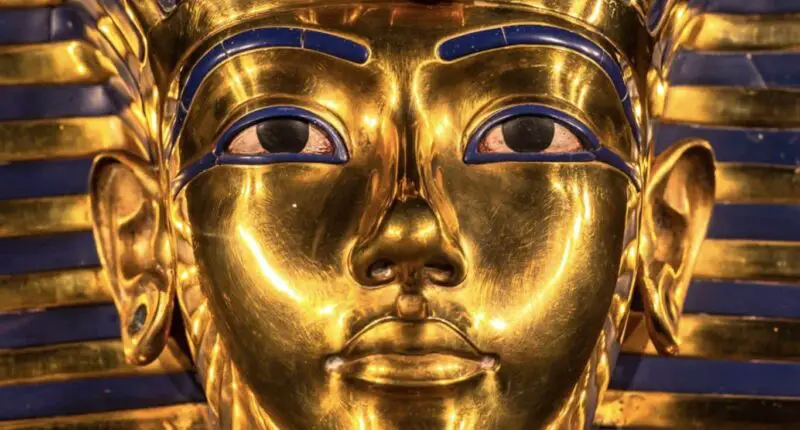The Pharaohs were the ancient rulers of Egypt, considered divine beings and held in high regard by their subjects. Their reign marked a golden age in Egyptian history, characterized by grand architecture, monumental art, and cultural achievements. However, despite their grandeur, much of their lives and customs remain shrouded in mystery, leaving many questions unanswered. In this article, we will be uncovering the mysteries of pharaohs, including the purpose of the pyramids, the curse of the Pharaohs, the discovery of Tutankhamun’s tomb, the mystery of Nefertiti, and the deciphering of ancient Egyptian hieroglyphics. Through this exploration, we will gain a deeper understanding of the lives of these ancient rulers and the civilization they ruled.
Uncovering the Mysteries of Pharaohs
Who are Pharaohs

Pharaohs were the ancient rulers of Egypt, considered to be divine beings and held in high regard by their subjects. The term “Pharaoh” is derived from the ancient Egyptian word per-aa, meaning “great house.” Pharaohs were considered to be the earthly representatives of the gods, and their rule was considered divine.
The Pharaohs ruled over Egypt for thousands of years, from around 3150 BCE to 30 BCE, when Egypt became part of the Roman Empire. During this time, Egypt saw significant cultural, artistic, and architectural achievements, including the construction of the pyramids, the development of hieroglyphics, and the creation of monumental art.
The Pharaohs were absolute rulers, with power over all aspects of life in Egypt. They were responsible for the administration of justice, the management of the economy, and the defense of the realm. They were also considered to be the guardians of tradition and religious beliefs, and their reign was characterized by the preservation of ancient customs and the advancement of cultural knowledge.
Purpose of the pyramids

The purpose of the pyramids in ancient Egypt is still a subject of much debate and speculation among historians and archaeologists. However, it is widely believed that they served several purposes, including:
- Tombs for Pharaohs and their consorts: The Pharaohs believed that they needed to be buried in grand and elaborate tombs to ensure their journey to the afterlife.
- Religious and spiritual significance: The pyramids were also believed to serve as a link between the Pharaohs and the gods. They were considered to be a representation of the pharaohs’ power and prestige, as well as a symbol of the gods’ favor.
- Astronomical observatories: They are used to track the movements of the stars and predict eclipses.
- Power and prestige: The construction of the pyramids was a symbol of the Pharaohs’ wealth and might, demonstrating their power and prestige to their subjects and enemies.
Tutankhamun’s tomb

Tutankhamun was a young Pharaoh of the 18th dynasty who ruled Egypt from 1332 to 1323 BCE. He was relatively unknown until the discovery of his tomb, which had remained sealed for thousands of years and was filled with treasures and artifacts that provided new insights into the life and culture of ancient Egypt.
The discovery of the tomb of Tutankhamun was made possible due to Carter’s persistence and dedication. He spent years searching for the tomb, which was eventually discovered by accident after several years of excavations. When Carter finally entered the tomb, he found it to be filled with a wealth of treasures, including gold masks, jewelry, figurines, and furniture.
Curse of the Pharaohs

The “curse of the pharaohs” or “mummy’s curse” is a superstition that states that anyone who disturbs the remains of an ancient Egyptian, especially a pharaoh, will be cursed. This belief claims that the curse causes misfortune, illness, or death to both thieves and archaeologists without distinction. However, since the mid-20th century, many authors and documentaries have attempted to explain the supposed curse as having scientifically credible reasons, such as the presence of harmful bacteria or radiation.
Mystery of Nefertiti

Nefertiti was an ancient Egyptian queen who lived during the 18th dynasty (c. 1370 – c. 1330 BC) and was the wife of Pharaoh Akhenaten.
- Her disappearance: Nefertiti disappears from the historical record around the 12th year of her husband’s reign, leading to speculation about what happened to her. Some theories suggest she may have died, while others propose that she may have taken on a new identity or been relegated to a lesser role in society.
- Her identity: Nefertiti was not of royal blood, which has led some to speculate about her origin and family background.
- Her influence on Akhenaten’s religious revolution: Nefertiti was a strong and influential queen who may have played a role in her husband’s religious revolution, which involved the promotion of a single sun god, Aten, over all others.
- The location of her tomb: Despite extensive searches, the location of Nefertiti’s tomb remains unknown, leading to speculation about where she may have been buried and what secrets it may contain.
Egyptian hieroglyphics

Deciphering ancient Egyptian hieroglyphics was a long and challenging process that took many centuries and the work of several scholars to achieve. Hieroglyphics were the writing system used by the ancient Egyptians for religious and administrative texts and were inscribed on temples, tombs, and other monumental structures.
The process of deciphering ancient Egyptian hieroglyphics began in earnest in the 16th century when the Rosetta Stone was discovered. This artifact, which was created in 196 BC, contained the same text written in three scripts: Greek, Egyptian demotic (a script used for everyday purposes), and ancient Egyptian hieroglyphics.
It was not until the late 18th century, however, that the French scholar Jean-François Champollion made the breakthrough that allowed for the full deciphered of ancient Egyptian hieroglyphics. Using the Rosetta Stone as a key, Champollion was able to demonstrate that the signs in the hieroglyphic script represented sounds and concepts, and not just individual objects as was previously thought.
Rumors and speculation

- Curse : It is a widely believed myth that whoever disturbs the tomb of a Pharaoh will be cursed with bad luck and death. This myth was popularized by the discovery of King Tutankhamun’s tomb in the early 20th century and the subsequent deaths of several people associated with the excavation.
- Cleopatra was not Egyptian: There is speculation that Cleopatra, one of the most famous Pharaohs of Egypt, was not actually Egyptian but of Greek descent. However, recent evidence suggests that she was a member of the Ptolemaic dynasty, which was of Macedonian Greek origin but ruled Egypt as Pharaohs.
- Hidden chambers in the Great Pyramid of Giza: There have been claims that there are secret chambers and passages within the Great Pyramid of Giza, but these have not been scientifically proven.
- Ramesses II was Moses: Some believe that Ramesses II was the Pharaoh of the Exodus, as described in the Bible. However, there is no historical evidence to support this claim.
- The Sphinx has a secret chamber: There is speculation that the Sphinx of Giza contains a hidden chamber within its body, but this has not been scientifically proven. Some believe that this chamber contains valuable treasures or secret knowledge.
Also Read: The 10 Legendary Tales of Heroes in Greek Mythology



